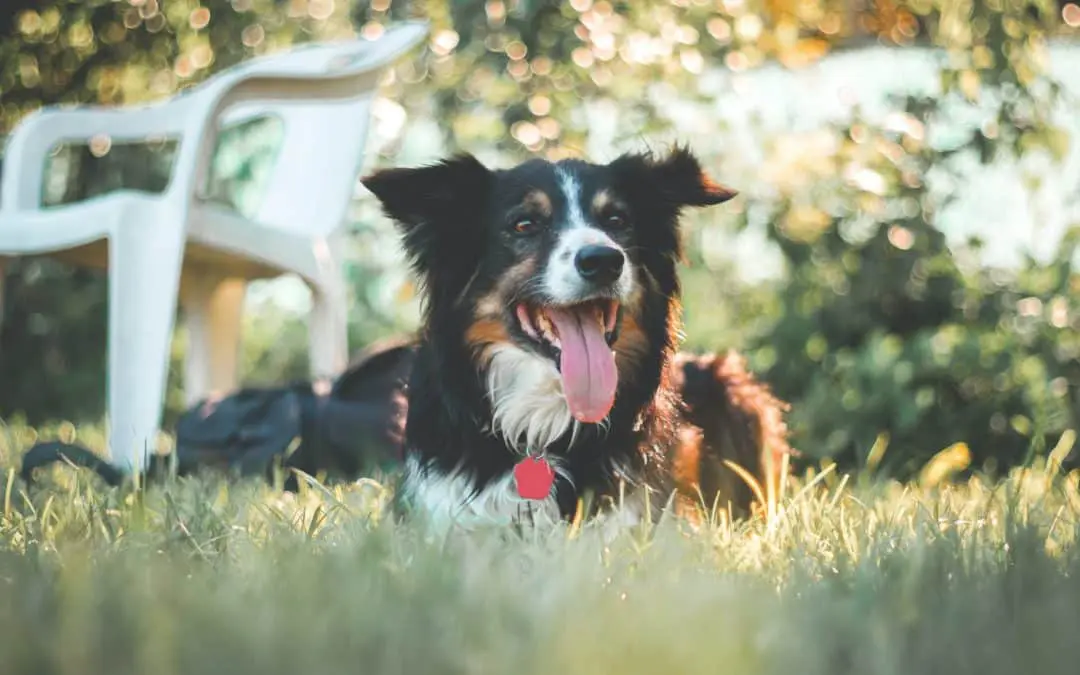Dehydration and overheating can be very dangerous for dogs. Heat stroke can lead to life-threatening medical conditions, such as seizures or an irregular heartbeat. It’s important to watch for signs of overheating in dogs, especially during the summer months. Here’s what you need to know about heat stroke, and how you can help your dog if they ever get overheated.
How Does Heat Stroke Affect Dogs?
Heat stroke, also known as heat exhaustion, is when your dog’s body becomes so hot that they can’t cool themselves off by panting. When a dog’s body temperature reaches 105 degrees, their organs start to shut down. High body temperatures can cause medical emergencies like seizures, cardiac arrhythmia, and even death.
Dogs, especially working and hunting breeds, will not always stop their fun activities before great exhaustion sets in. Always make sure your pet is drinking lots of water and resting when they play outside. It is up to you to make your furry friend take breaks on hot days, and up to you to notice the symptoms of heat stroke before it is too late.
Signs of Overheating in Dogs
The most common symptoms of heat stroke or heat exhaustion include:
- Excessive panting
- Unwillingness or inability to move
- Thick drool
- Vomiting or diarrhea
How to Help an Overheated Dog
- Place wet towels all over the dog’s body. If you’re not able to do this, move the dog into the shade and pour cool water onto their body, concentrating on the places where there is less fur, like the folds of the legs.
- Fan the dog while they rest in the shade.
- Seek immediate treatment. Even if your dog seems to be back to normal, excessively high body temperatures can still lead to organ failure.
How to Avoid Overheating Your Dog
- Be mindful of giving your dog access to fresh water and shade when they are outside. Always pack extra water for yourself and your pup when going on walks and hikes. Bring ice packs and spray bottles to help regulate your dog’s body temperature during breaks. Learning how to safely hike with your dog can prevent accidents like overheating.
- Check your dog’s temperature before embarking on adventures. Remember that your dog is wearing a fur coat, so if you are warm in shorts, then they are extra warm. Always check the temperature of the sidewalks as well, as hot sidewalks can burn paw pads and increase stress in already overheated animals.
- NEVER leave your dog unattended in your car. Many animals have died of heat exhaustion in vehicles. Even with the windows cracked, temperatures can reach 125 degrees in less than 5 minutes!
- On hot days, ensure that your pet has a cool place to lie down. Find the lowest point in your home and set up a fan. This will help keep your dog from overheating in the house.
- Pay extra attention to elderly and flat-faced dogs, as they have a higher risk of dying from heat exhaustion.
- Use caution when using hair dryers, especially cage blowers.
Emergency Veterinary Care in the Gilbert Area
If your dog has experienced any symptoms of heat exhaustion, we recommend bringing them in for an exam. At East Valley Animal Hospital, we have the tools and knowledge to determine if the heat has caused any damage to your dog’s organs. Prevention is key, so at your next checkup, ask us more about how to keep your dog safe from heat exhaustion.
Images used under creative commons license – commercial use (9/2/22). Photo by daniel plan on Unsplash.

